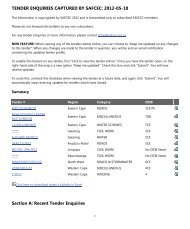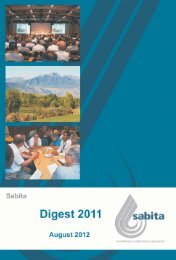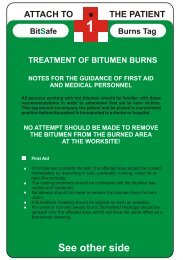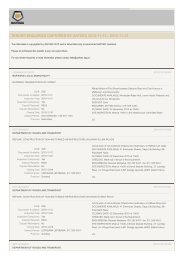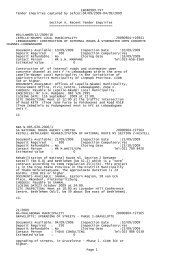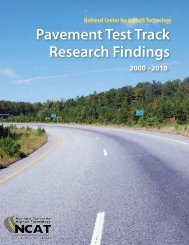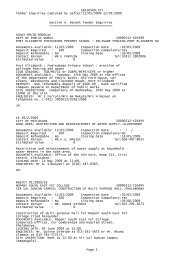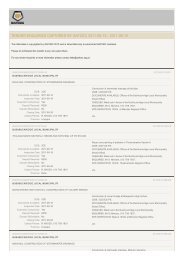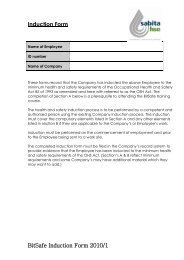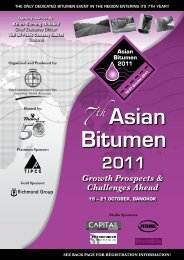DIGEST 2006 - Sabita
DIGEST 2006 - Sabita
DIGEST 2006 - Sabita
You also want an ePaper? Increase the reach of your titles
YUMPU automatically turns print PDFs into web optimized ePapers that Google loves.
environment and red tape on<br />
small and medium–sized<br />
businesses; and deficiencies in<br />
State organisation, capacity and<br />
leadership” (Le Roux, <strong>2006</strong>).<br />
The Joint Initiative on Priority<br />
Skills Acquisition (JIPSA) has<br />
subsequently been launched to<br />
counter the skills<br />
dearth of engineers,<br />
artisans and other<br />
technically skilled<br />
people who will be<br />
essential in making<br />
ASGISA work.<br />
JIPSA was launched<br />
on March 27 <strong>2006</strong><br />
by Deputy President<br />
Phumzile<br />
Mlambo-Ngcuka as<br />
a multi-stakeholder<br />
group in which<br />
government,<br />
business and labour<br />
have joined forces<br />
to fast-track the provision of<br />
priority skills for accelerated and<br />
shared growth.<br />
These include high-level,<br />
world-class engineering and<br />
planning skills for core network<br />
industries, such as transport,<br />
communications and energy.<br />
Other critical skills on the list are:<br />
• city, urban and regional<br />
planning and engineering<br />
skills;<br />
• artisan and technical skills,<br />
particularly, those needed for<br />
infrastructure development;<br />
• management and planning in<br />
education, health and<br />
municipalities;<br />
JIPSA targets call<br />
for engineering<br />
graduates to<br />
increase by 1000<br />
per year;<br />
technologists by<br />
300 per year; and<br />
artisans by 15 000<br />
to 20 000<br />
per year<br />
• teacher training for<br />
mathematics, science,<br />
information and<br />
communication technology<br />
(ICT); and<br />
• language competence in<br />
public education. (Le Roux,<br />
<strong>2006</strong>).<br />
JIPSA has<br />
subsequently set<br />
“rough” targets for<br />
South Africa’s<br />
universities and<br />
universities of<br />
technology. They<br />
must increase the<br />
number of<br />
engineering<br />
graduates by a total<br />
of 1000 graduates<br />
per year. Secondly,<br />
the country’s<br />
universities of<br />
technology must<br />
increase the<br />
number of<br />
technologists they produce by 300<br />
a year. Thirdly the number of<br />
qualifying artisans must be<br />
increased to between 15 000 and<br />
20 000 a year. (Le Roux, <strong>2006</strong>).<br />
An amount of R48 million has<br />
immediately been made available<br />
to give support to engineering<br />
faculties to achieve these targets.<br />
Unfortunately “correcting<br />
formulas” used in the past<br />
prevailed in the current funding<br />
allocation to universities, resulting<br />
in institutions like the University of<br />
Stellenbosch receiving nothing<br />
because their student demographics<br />
are not satisfactory. This<br />
tendency to persist with political<br />
adjustment motives ignores the<br />
reality of the limited capacities at<br />
47



